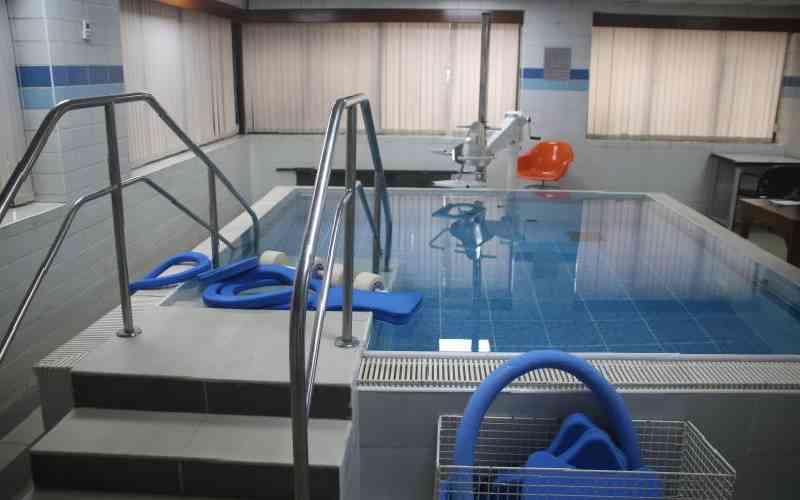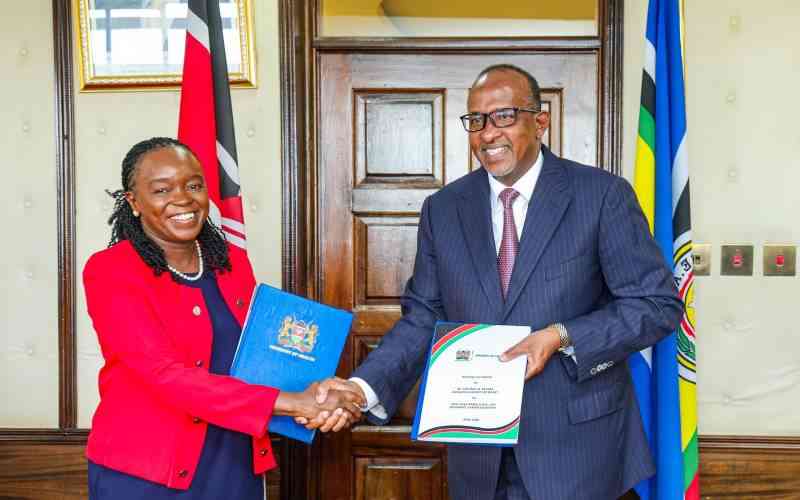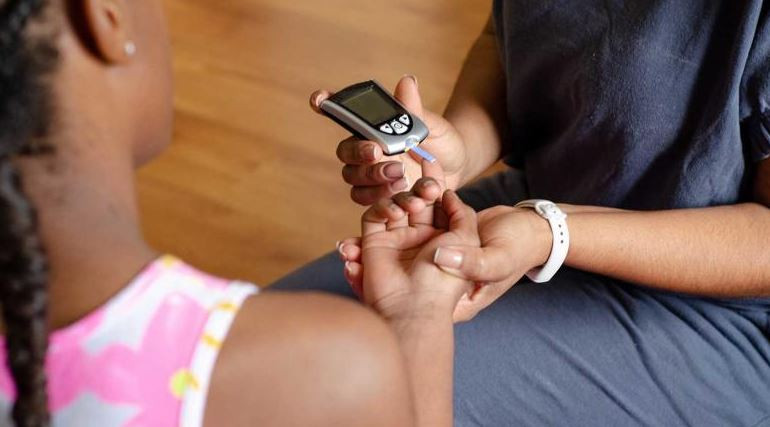
At least one out of 10 people may be suffering from kidney health issues, and since there are often no early symptoms, screenings are essential.
Elda Monyenje, 34, a vegetable vendor who operates at the Mau-Summit junction on the Kericho-Nakuru highway, is a kidney disease survivor and is currently among many Kenyans who cannot afford proper treatment.
“I am one of the 4 million people living with kidney disease, and I didn’t know it,” she said.
“For two years, I had been told that there was a little protein in my urine, and they would explain it away, and I would be relieved.”
“I didn’t know then I should have asked for some further testing to test my kidney functions,” she told the Standard at the Nakuru Level 5 Hospital’s renal unit where she has been undergoing dialysis.
Keep Reading
- My son's kidney saved my life
- Dialysis or transplant? Tough choices facing kidney patients
- AAR expands dialysis services to meet demand
The facility that serves some of the neighbouring counties in the South Rift region, has 15 dialysis machines, and they are all occupied by patients daily.
Cost of treatment
When Elda was suddenly diagnosed with Stage 3 kidney disease, meaning her kidneys were very close to failure or already had failed, she was immediately put on dialysis.
“When I was diagnosed with kidney failure, it took me by surprise because I did not know what it meant to be a kidney patient.”
“I thought that this could be the beginning of the end of my life,” said Elda, whose body has since deteriorated in the past two years.
As many other kidney patients, Elda is worried about the cost of treatment, which she says is way too much for struggling patients.
“The cost of treatment is way too much for a common person like me as I can no longer work as before. I have to be on dialysis twice a week and still be on drugs that are expensive. My diet is expensive as well. I can only take white meat, fish and chicken," the mother of three lamented.
Another patient, Joseph Kimani, has been undergoing dialysis for the past 14 years.
He started his treatment before the National Health Insurance Fund (NHIF) started paying for dialysis services, and was forced to sell some of his property to meet the cost of treatment.
“I have spent my entire savings, and been forced to sell some of my property due to this illness,” says the former Kenya Farmers Association (KFA) employee.
Life changed
Before he was diagnosed with kidney disease, he had diabetes in the late 1980s when he became a father.
Kimani says the disease became a burden when he was retrenched and he had to look for other ways to finance his treatment.
“Ever since I developed kidney failure 14 years ago, life has never been the same as I cannot even work," says Kimani, who also undergoes dialysis at the Nakuru Level 5 Hospital renal unit.
Sadly, there are so many patients like Elda and Kimani who are unable to access proper treatment due to high cost of treatment and procurement of kidney drugs.
It costs Sh60,000 to undergo dialysis per month at a public facility while the same process costs Sh100,000 in a private hospital.
Most specialists would recommend that a patient undergoes dialysis three times a week, but due to the high cost of medical treatment most patients, like Elda, have opted to do it twice a week.
This is because of what the NHIF offers for dialysis patients who have secured medical coverage.
According to statistics from the Kenya Renal Association, an estimated 4 million Kenyans are suffering from kidney disease, and by the year 2030, the number will rise to 4.8 million.
However, the Standard has established that the cost per session is Sh9,500 for both private and public hospitals
Dr Antony Wainaina, a kidney specialist and Head of the Renal Unit at the Nakuru Level 5 Hospital, concurs that the cost of kidney treatment to a common man is prohibitive despite NHIF meeting part of the medical cost for patients.
Many have surrendered and died because they could not meet the cost of medication, he says.
A kidney transplant at Moi Teaching and Referral Hospital costs Sh500,000 while it costs not less than Sh1 million in a private hospital.
“Even after the kidney transplant, patients have to take expensive anti-rejection drugs for the rest of their lives which cost between Sh30,000 to Sh60,000 per month, for as long as they live,” Dr Wainaina says.
He adds, “It’s still expensive for a common man. Therefore, there is a need to campaign for equitable and accessible care for the kind who cannot afford it.”
Lack of personnel
According to Dr Wainaina, there is a need to increase awareness as a means to manage and even reduce the increasing cases through proper diagnosis.
“This year’s theme aims at improving kidney health for all advancing equitable access to care and optional medication practice. Basically, it’s raising awareness about the importance of kidney health. We can achieve this by having early proper diagnosis," says Wainaina.
Even though the government has decentralized the dialysis services to the regional hospitals like the Nakuru renal unit, Dr Wainaina says there is a need to add more centres, machines and personnel to help in providing adequate care and equitable and affordable health services.
“A dialysis patient needs at least four hours in the machine to be able to clear some of the toxins from the blood. We have 15 machines and one water plant, this facility serves hundreds of patients every day and night as a result of too much workload, the machines are bound to break down," says Mary Munisi, a renal Specialist Nurse, at the renal unit.
Ms Munisi, who is the senior nurse, attributes some of the challenges to the lack of enough personnel at the facility besides the limited number of machines and the agony patients go through especially young patients on dialysis.
“We have young patients here who need proper management and counselling. Some of them can’t stand the diet and the pain they go through during the treatment as a result they lose hope and can’t take care of themselves they end up dying at a young age," said Munisi.
Many families have been left destitute by the disease because patients tend to use a lot of the families’ resources or hold medical fund drives to foot their bills.





